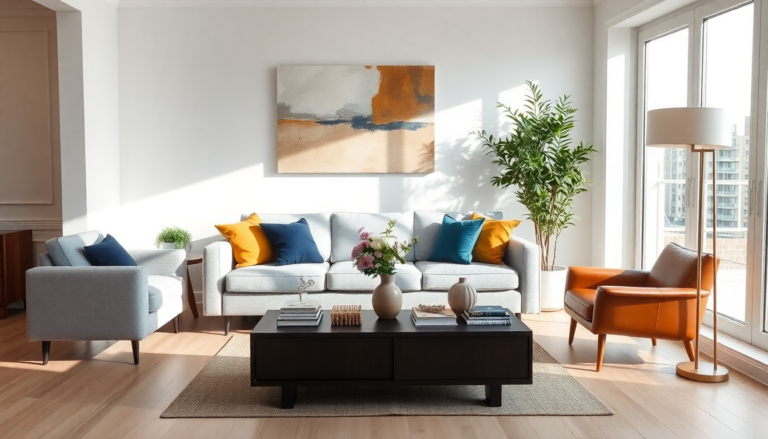Argomenti trattati
When it comes to home decoration, have you ever found yourself second-guessing your instincts? While your personal style is crucial, some choices can unintentionally derail the aesthetic and functionality of your space. Interior designers often spot common blunders made by homeowners, but don’t worry—most can be easily fixed with a little guidance. In this article, we’ll explore the most frequent decorating missteps and share how to steer clear of them, ultimately enhancing the warmth and character of your home.
Choosing the Right Rug Size
One of the most common mistakes homeowners make is picking rugs that are just too small for their rooms. As designer Gideon Mendelson points out, rugs should be positioned under furniture groupings rather than left floating awkwardly in the middle of the room. The right-sized rug can create a unique blend of spaciousness and intimacy. Designer Meghan Jay further emphasizes that a larger rug can dramatically improve the room’s layout and comfort. Unsure about sizing? The golden rule is this: always go for a larger option to achieve better balance.
The choice of rug doesn’t just affect size; it also dictates the room’s visual appeal and comfort level. A well-sized rug anchors your furniture, creating a cohesive look that draws the eye in and defines an area. On the flip side, smaller rugs can make a room feel disjointed and incomplete, missing the warmth that a larger, appropriately placed rug brings.
The Importance of Consistent Lighting
Did you know that lighting plays a crucial role in setting the mood of a room? Yet, many homeowners overlook the significance of choosing bulbs with consistent color temperatures. Designer Meghan Jay highlights that having varying light temperatures in a single space can create an unsettling atmosphere. To keep things harmonious, stick to a specific Kelvin range for all your fixtures. And if you want to elevate the ambiance, consider experimenting with dimmers—these little devices can help you adjust the mood based on the time of day or activity.
Furthermore, the placement of light fixtures deserves some thought. Overhead lights should illuminate the entire room, while task lighting should be strategically positioned to enhance functionality in work areas. A balanced approach to lighting creates a welcoming environment that feels both comfortable and practical.
Accessorizing Thoughtfully
While larger furniture pieces are essential to any room, let’s not forget the finishing touches—accessories—which truly bring a space to life. Many clients neglect this final layer, leaving their homes feeling stark and uninviting. Designer Meghan Jay advises investing in accessories that resonate personally with you. Pieces like artwork, decorative objects, and heirlooms add depth and character, transforming a generic space into a true reflection of your personality.
It’s vital to curate these pieces thoughtfully. Instead of filling your space with mass-produced items, think about incorporating vintage finds or unique objects that tell a story. This not only enhances the aesthetic appeal but also instills a sense of pride and connection to your home.
Understanding Scale and Proportion
One of the biggest challenges homeowners face is understanding the scale and proportion of their furniture within a room. Designers John Stivale and Gideon Mendelson point out that selecting pieces that are either too large or too small can disrupt the harmony of a space. A smart strategy is to measure the area and visualize the arrangement before you buy. This careful planning ensures that your furniture complements the room’s dimensions instead of overwhelming or underwhelming it.
When it comes to smaller items, such as cabinet hardware, varying the scale can add interest and dimension to your design. Jerel Lake emphasizes that playing with different arrangements on upper and lower cabinets creates a more dynamic look. By thoughtfully considering the size and placement of every element, homeowners can achieve a cohesive and visually appealing environment.
Embracing Unique Styles and Personal Touches
Have you ever noticed how purchasing matching furniture sets can lead to a bland and uninspired look? Variety is key to creating a warm and inviting atmosphere. Designer Gillian Segal suggests that mixing and matching individual pieces that complement each other adds richness and character to a space. This eclectic approach allows for personal expression, making your home truly feel like yours.
And remember, decorating is not a race. Taking the time to find the right pieces—whether vintage or new—can lead to a more satisfying and personalized outcome. Investing in quality items that resonate with your aesthetic will yield a home that feels cohesive and thoughtfully decorated.

